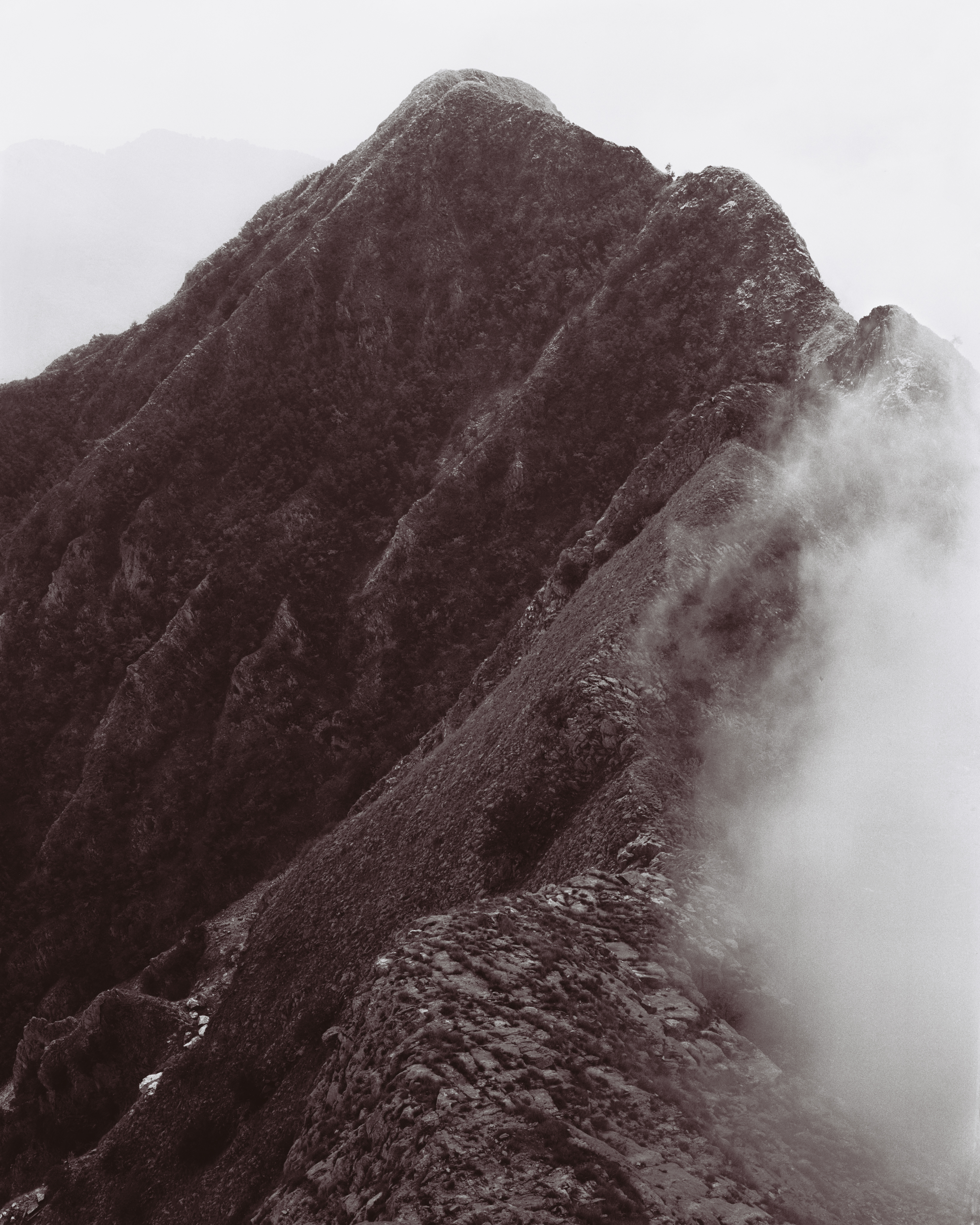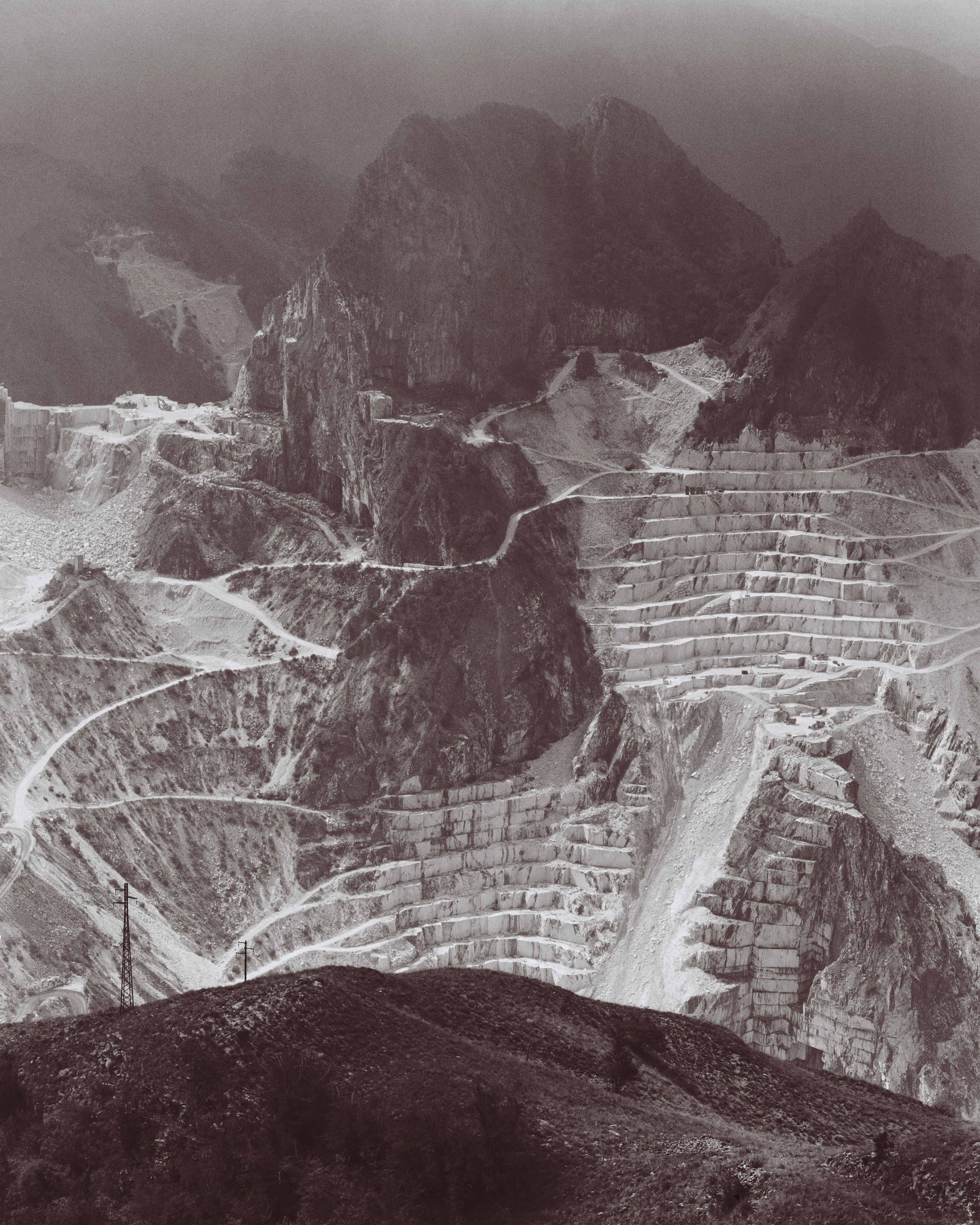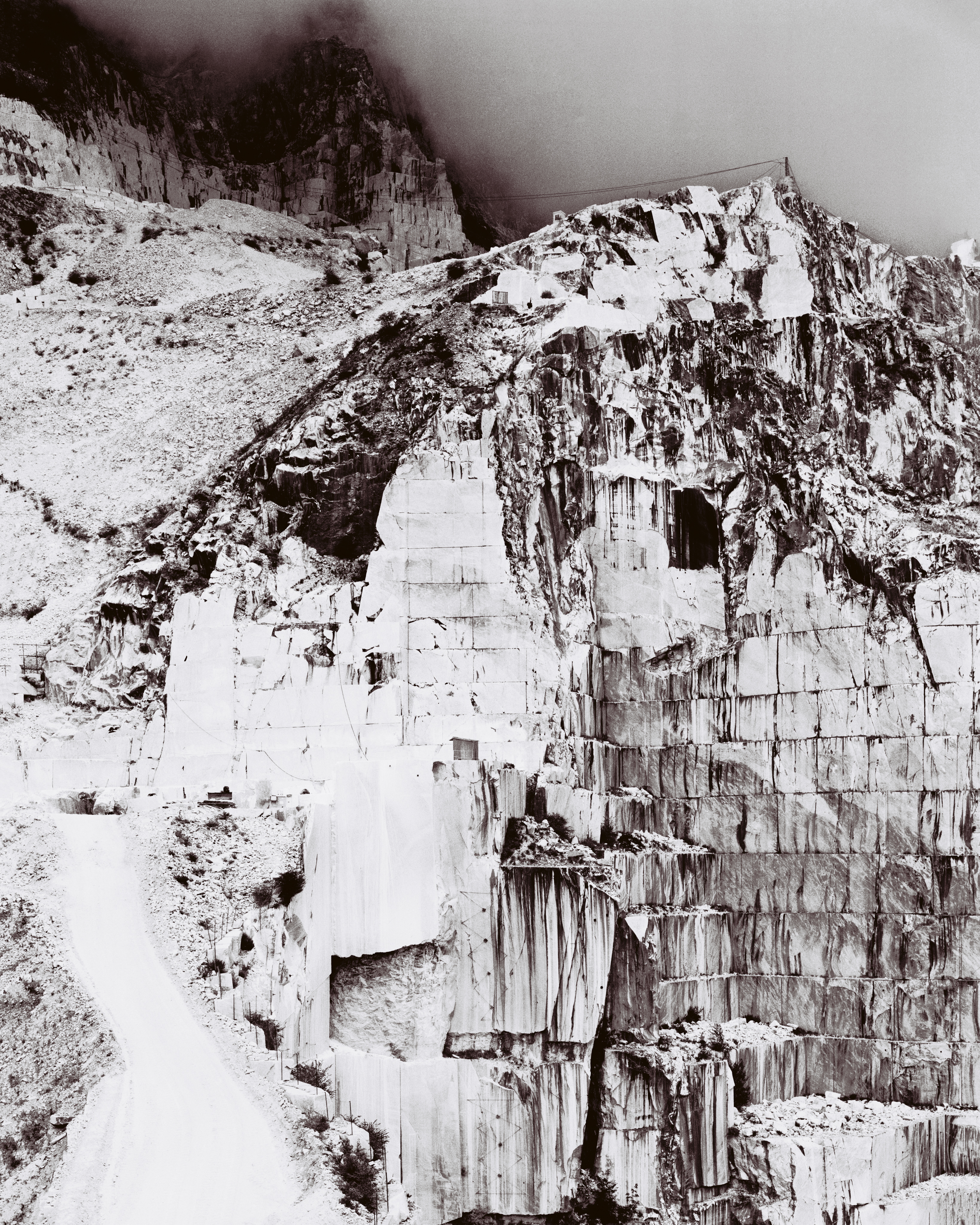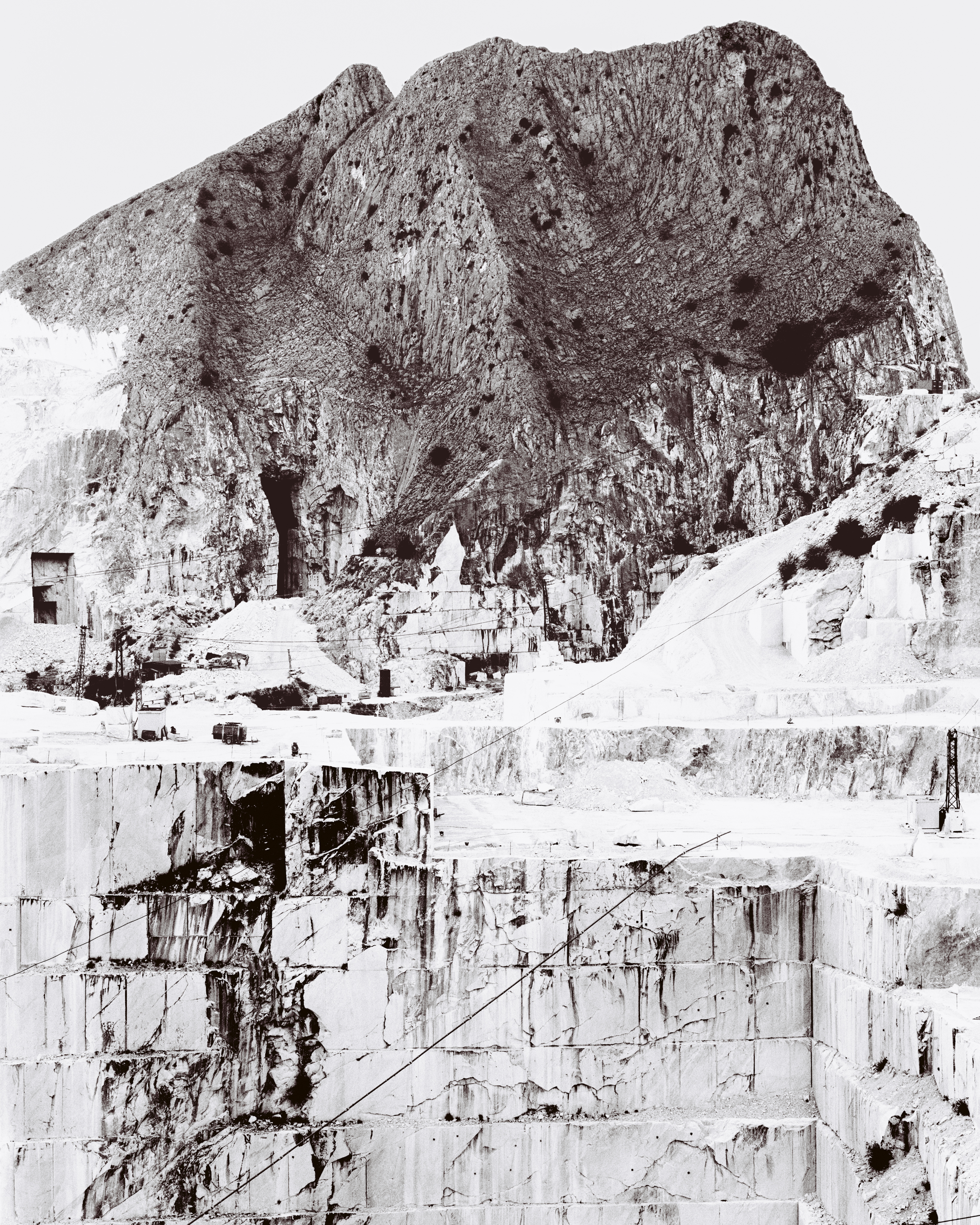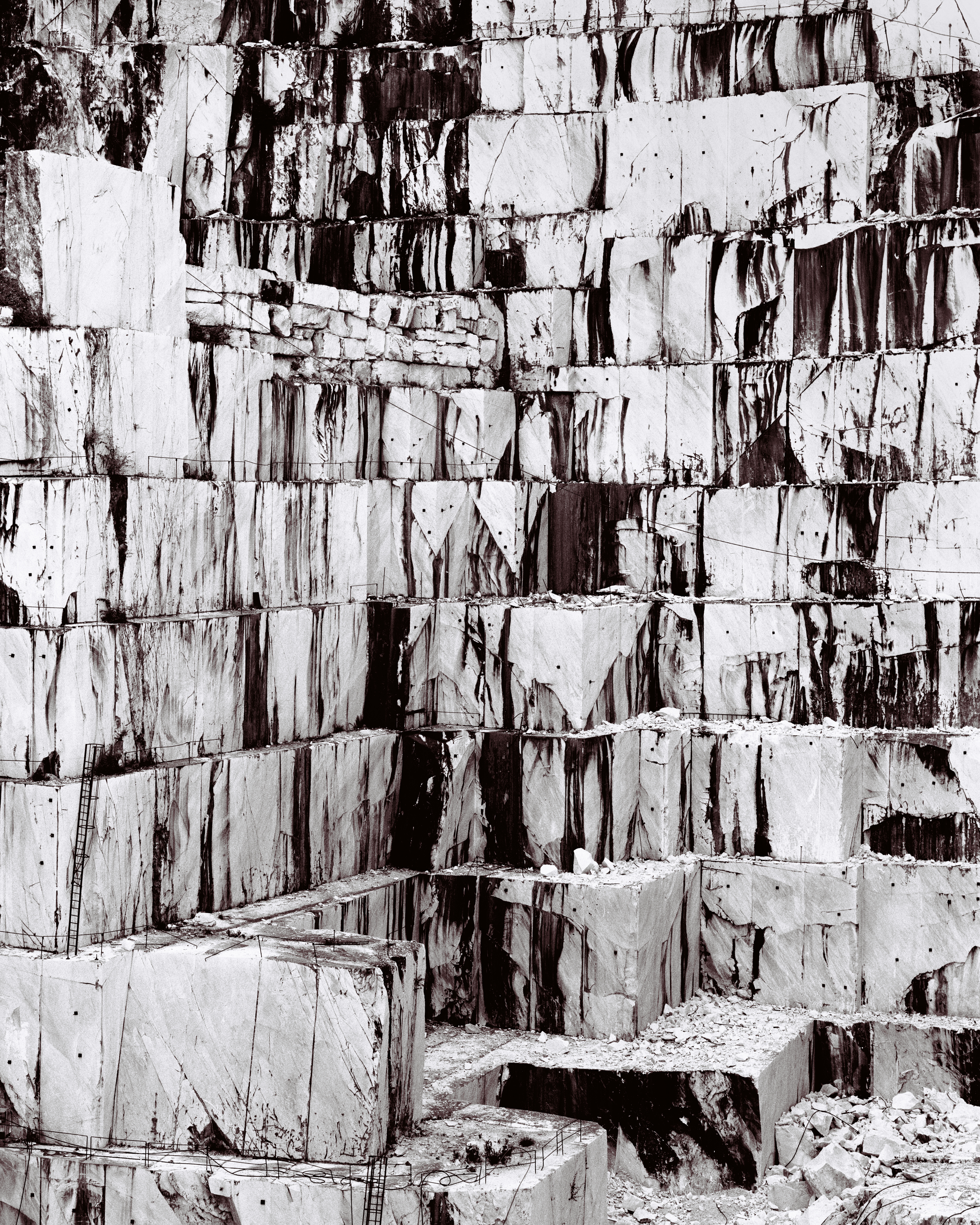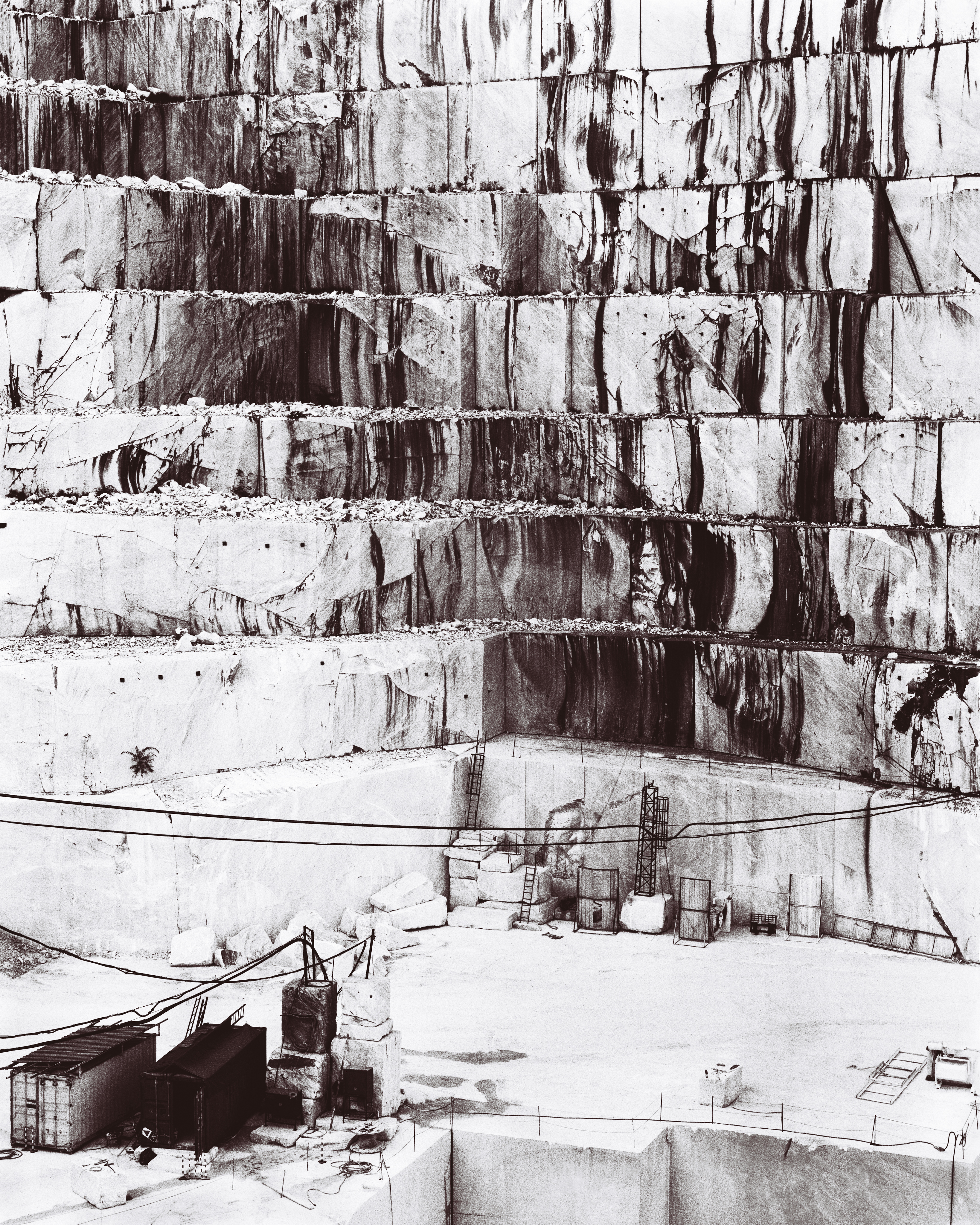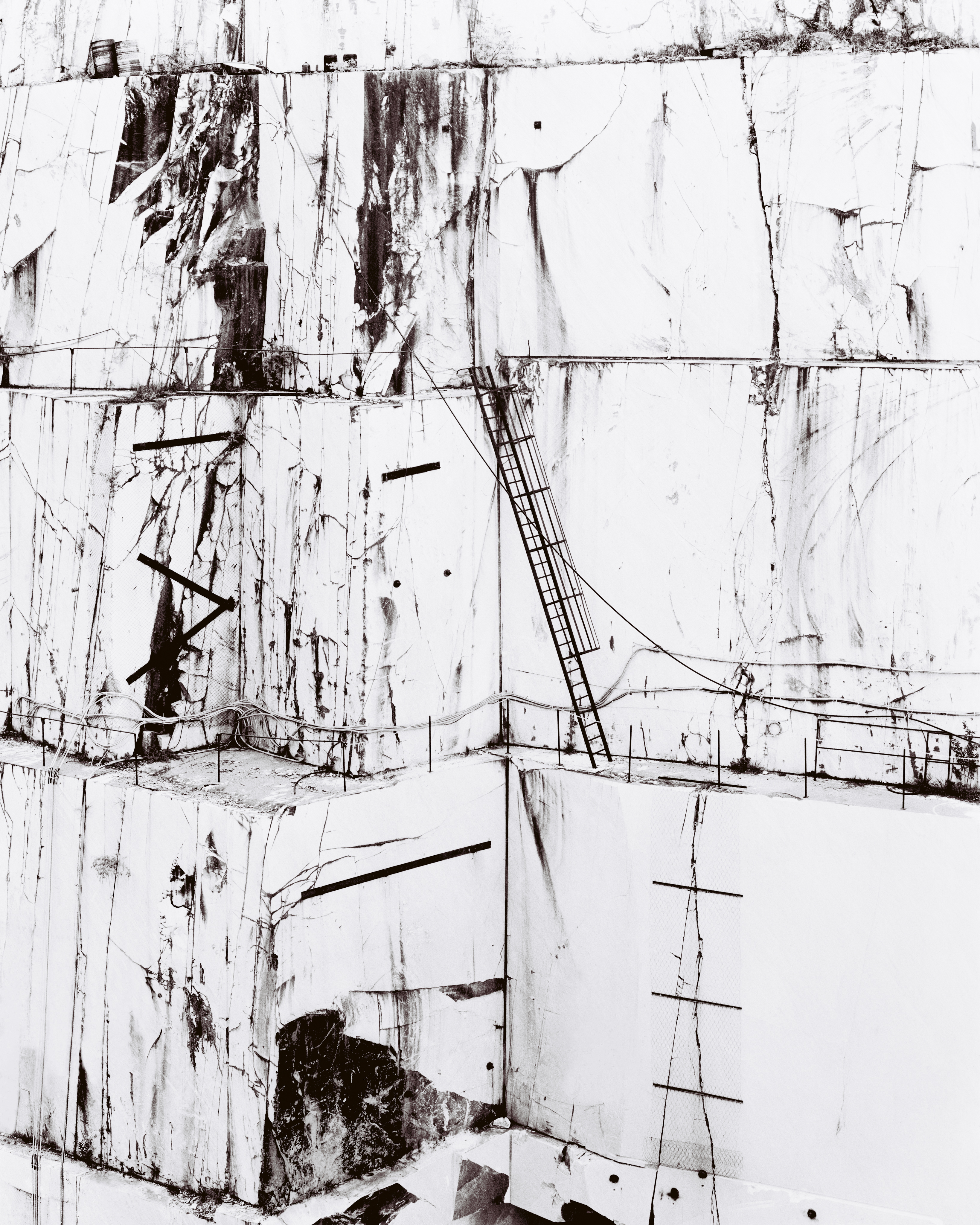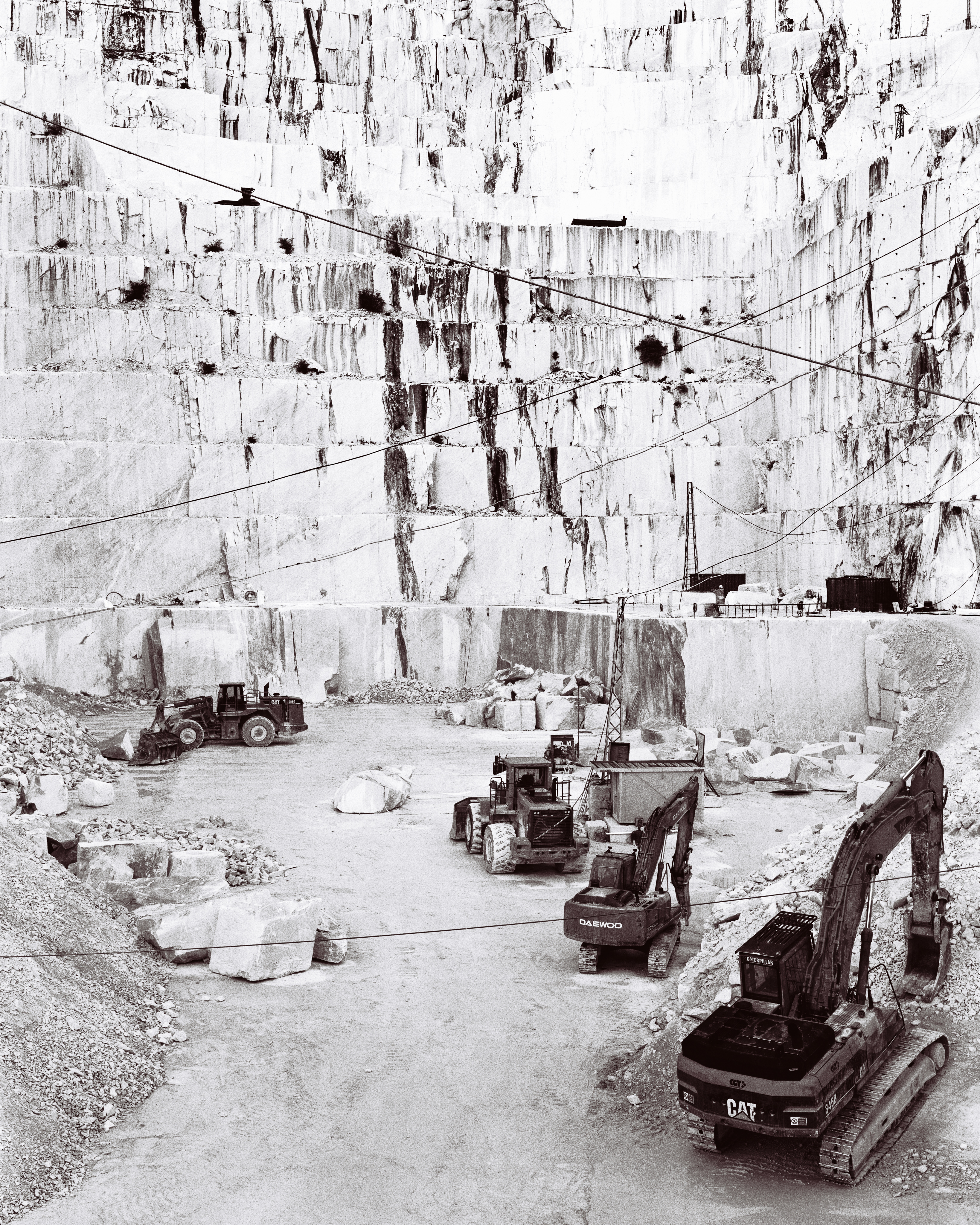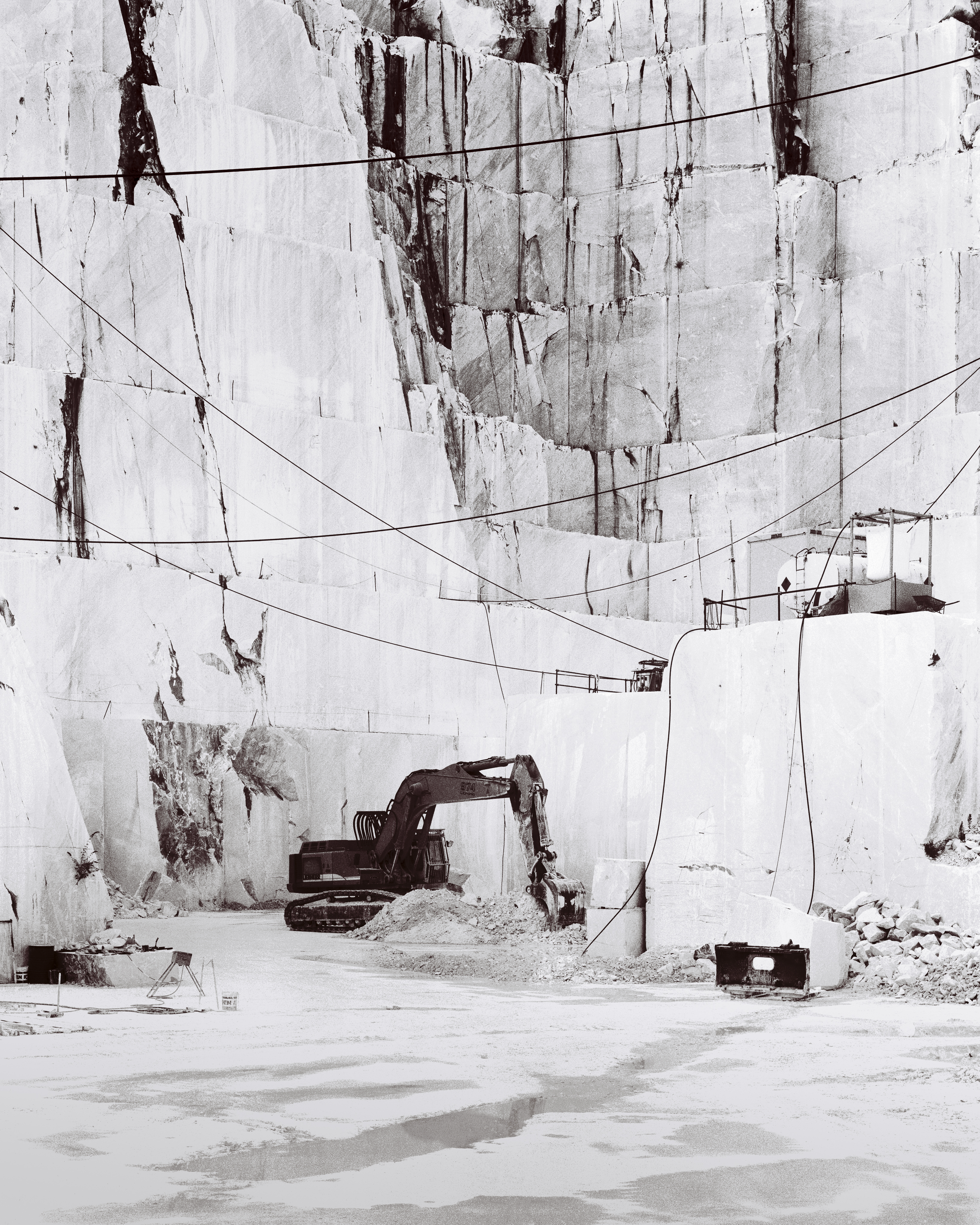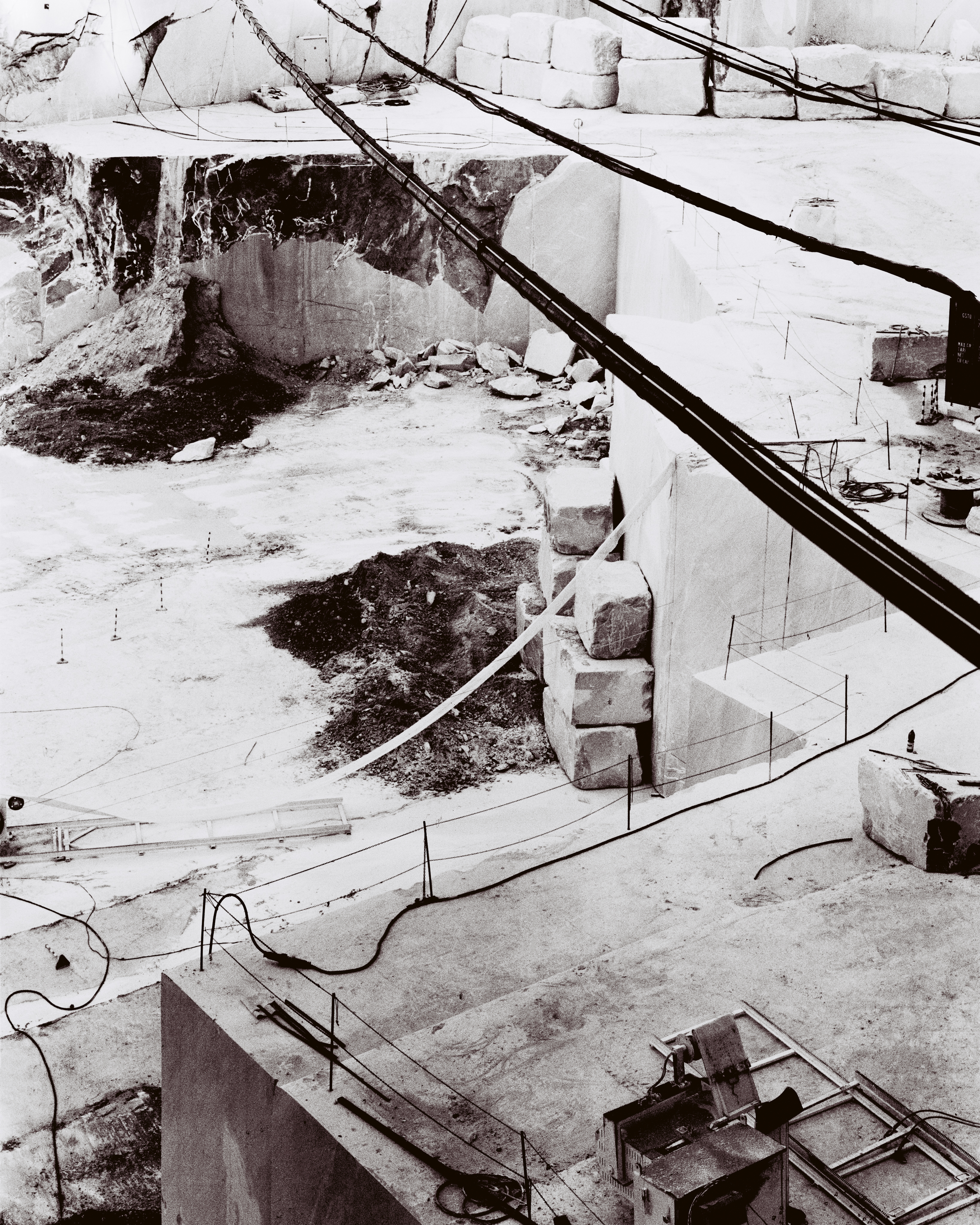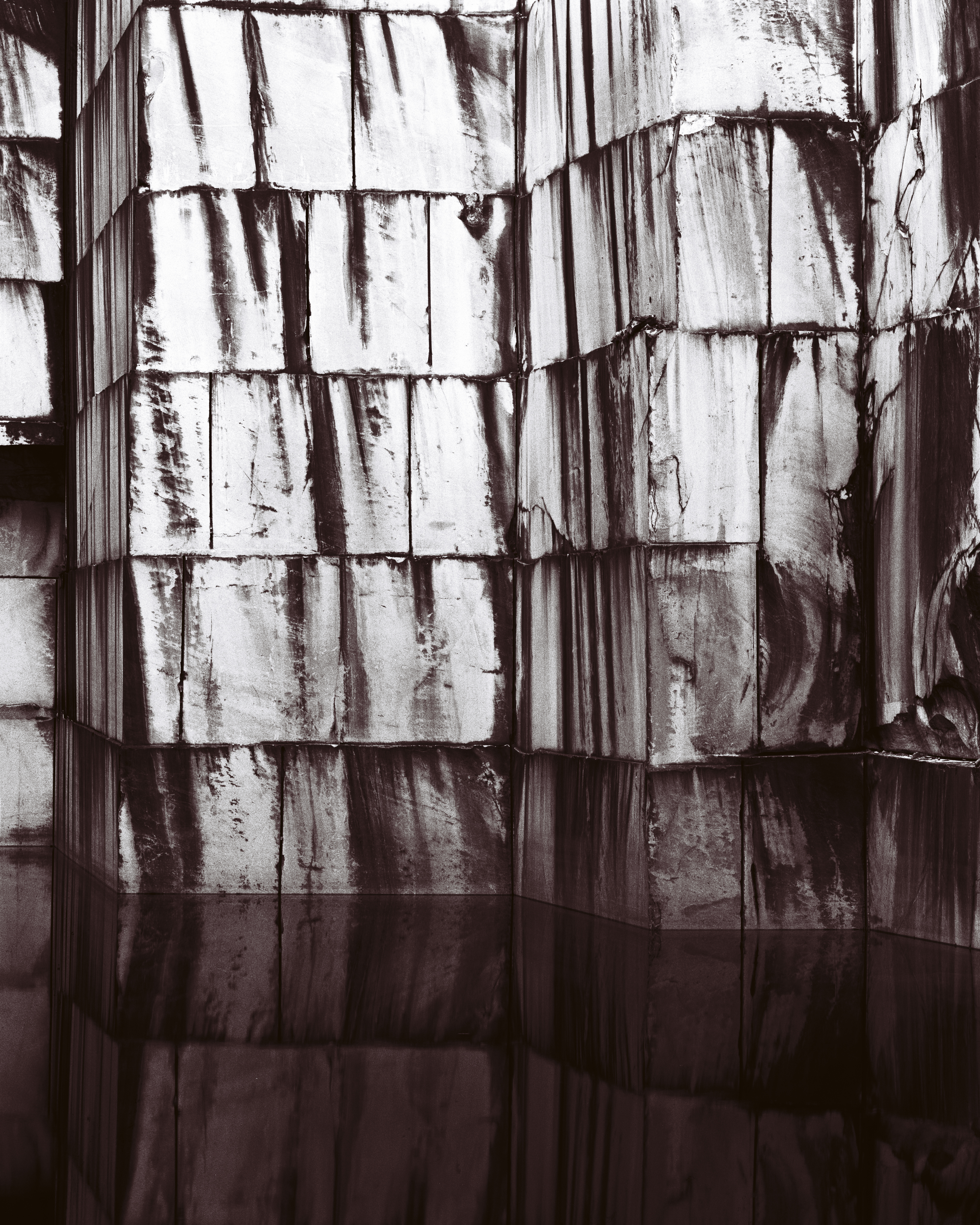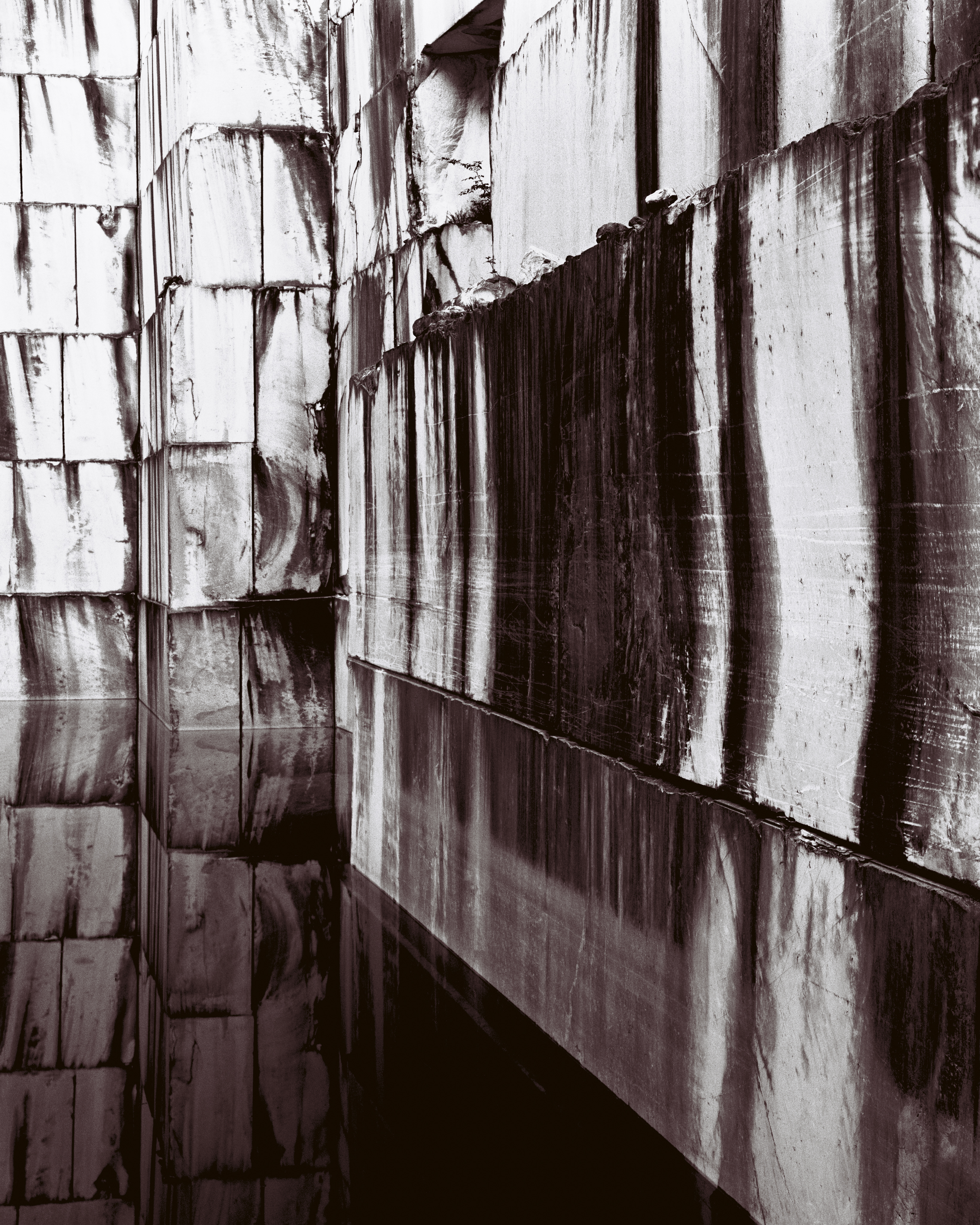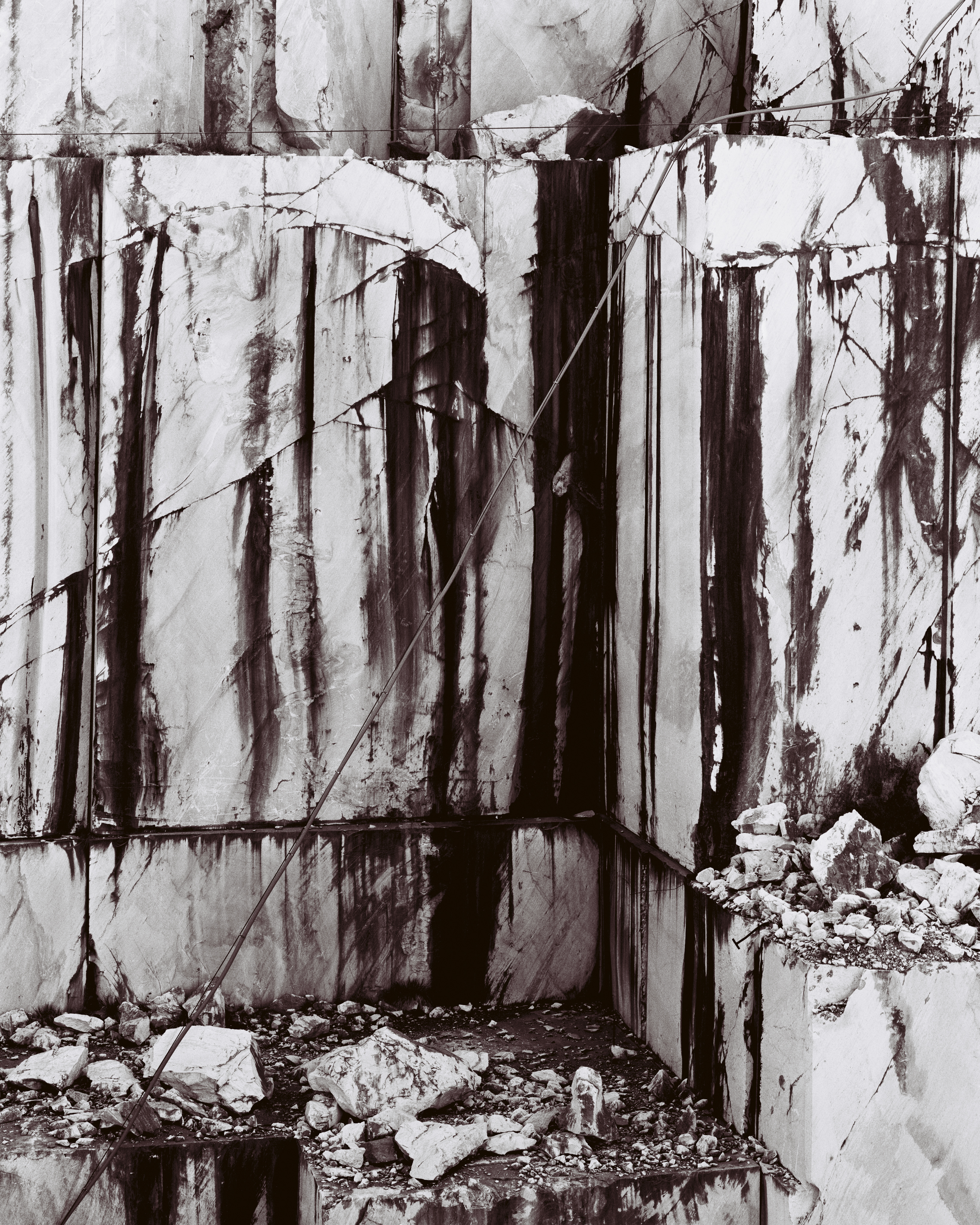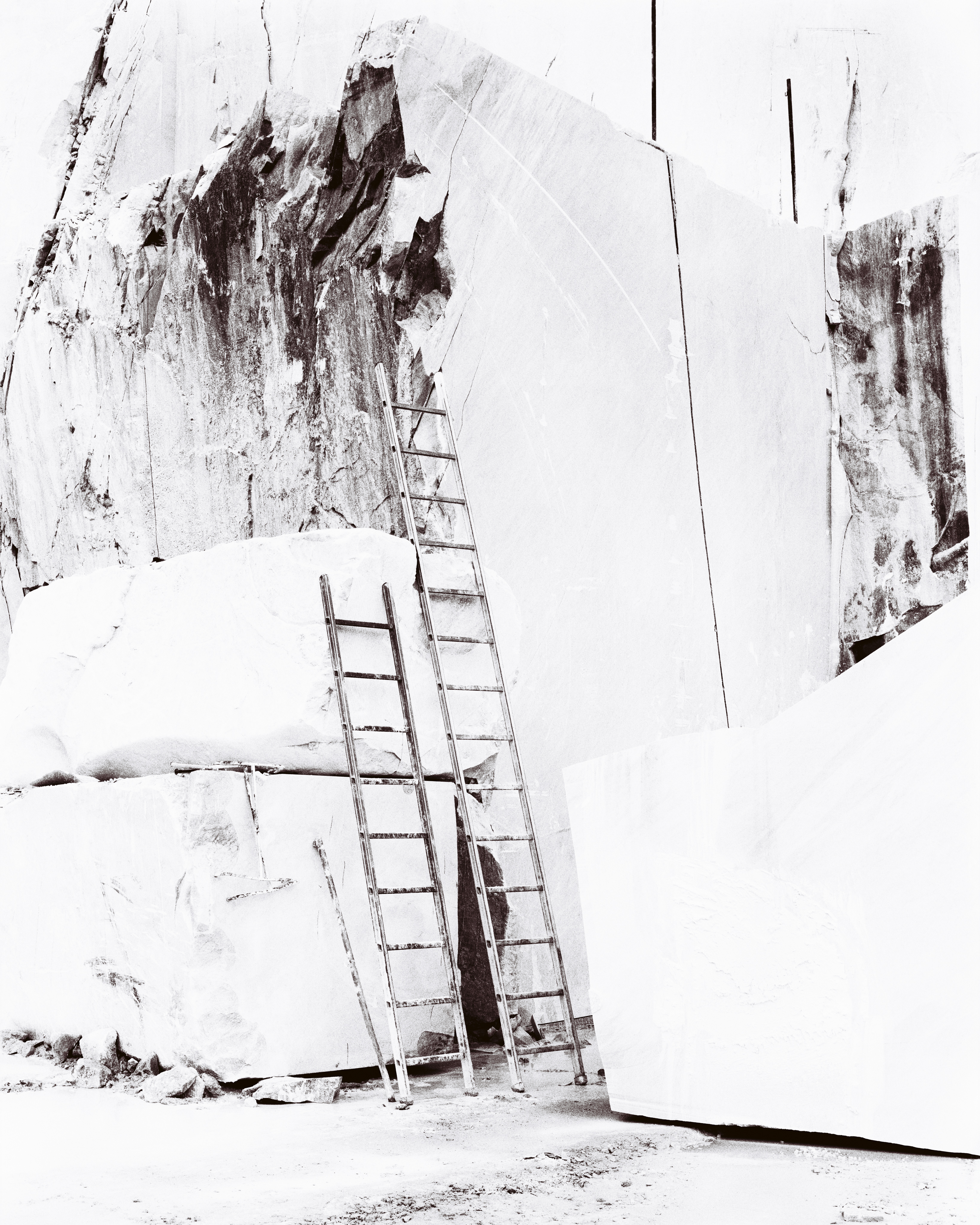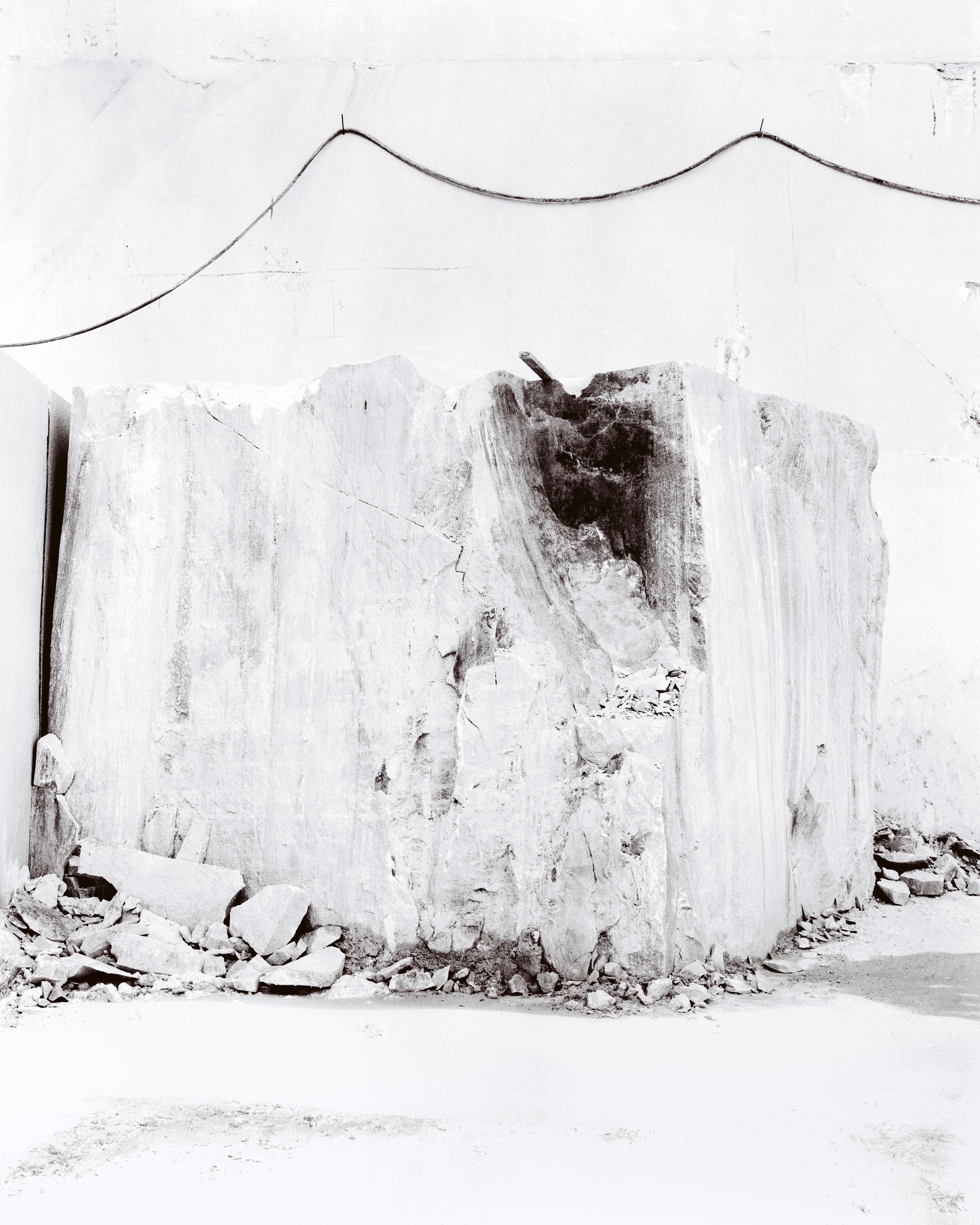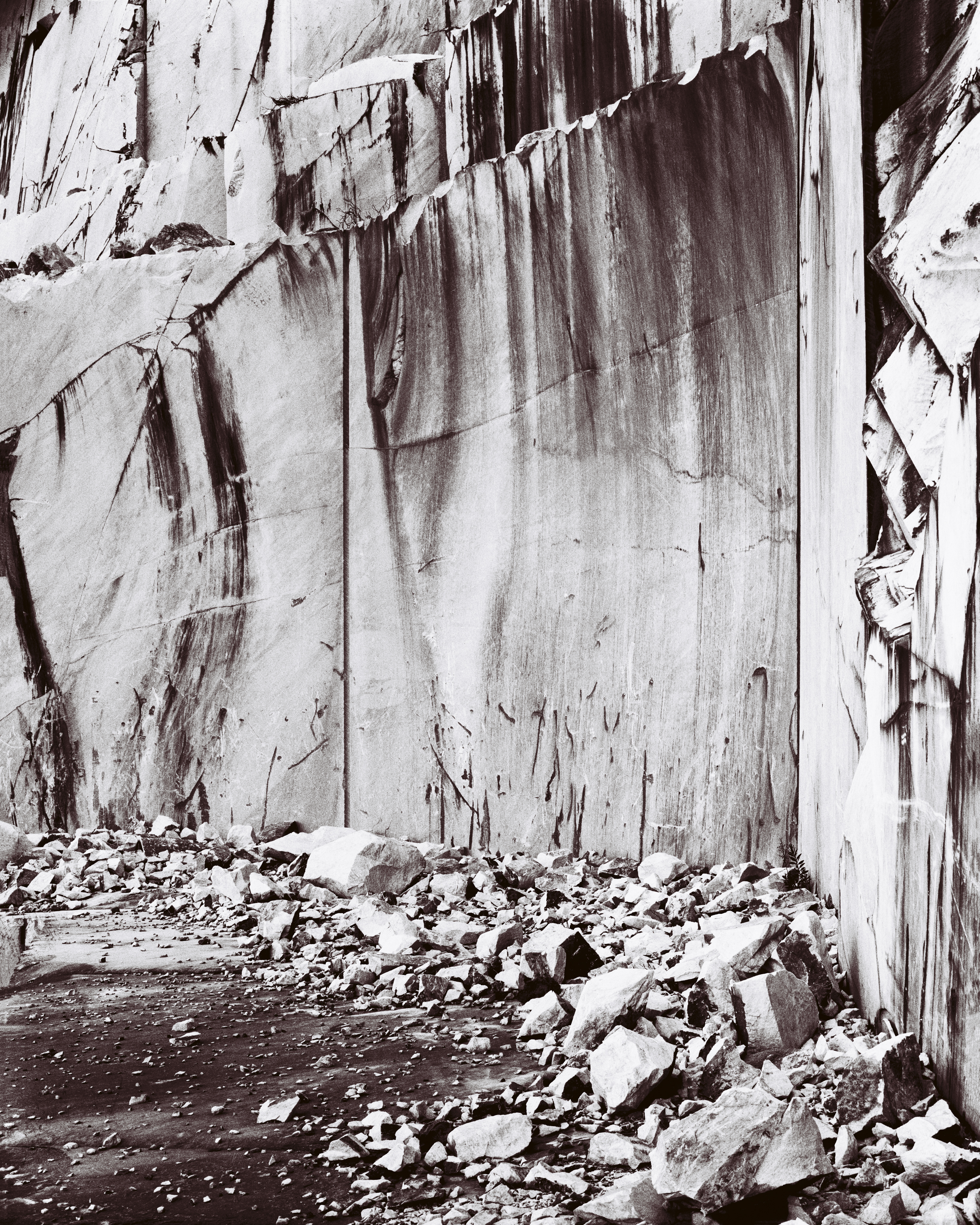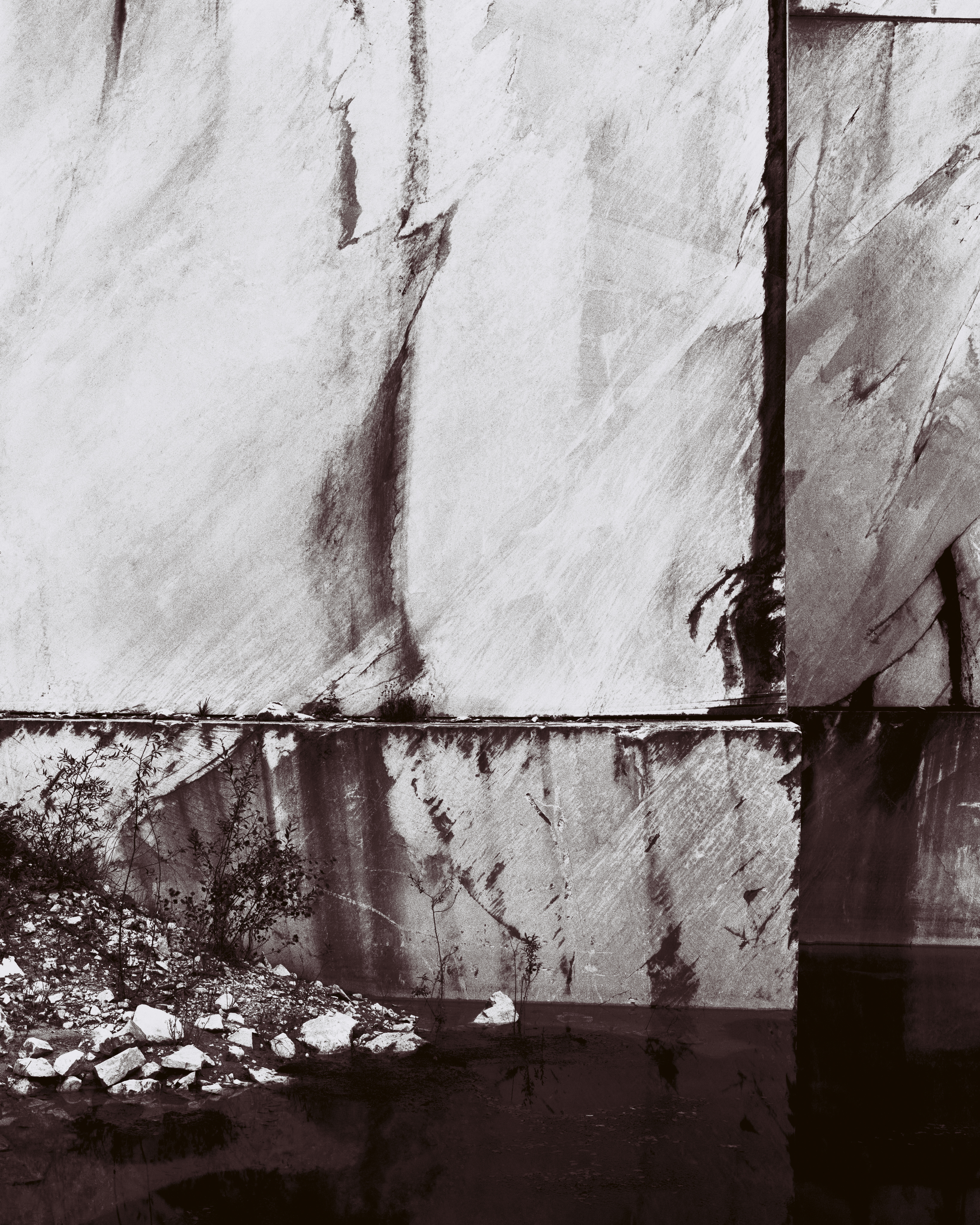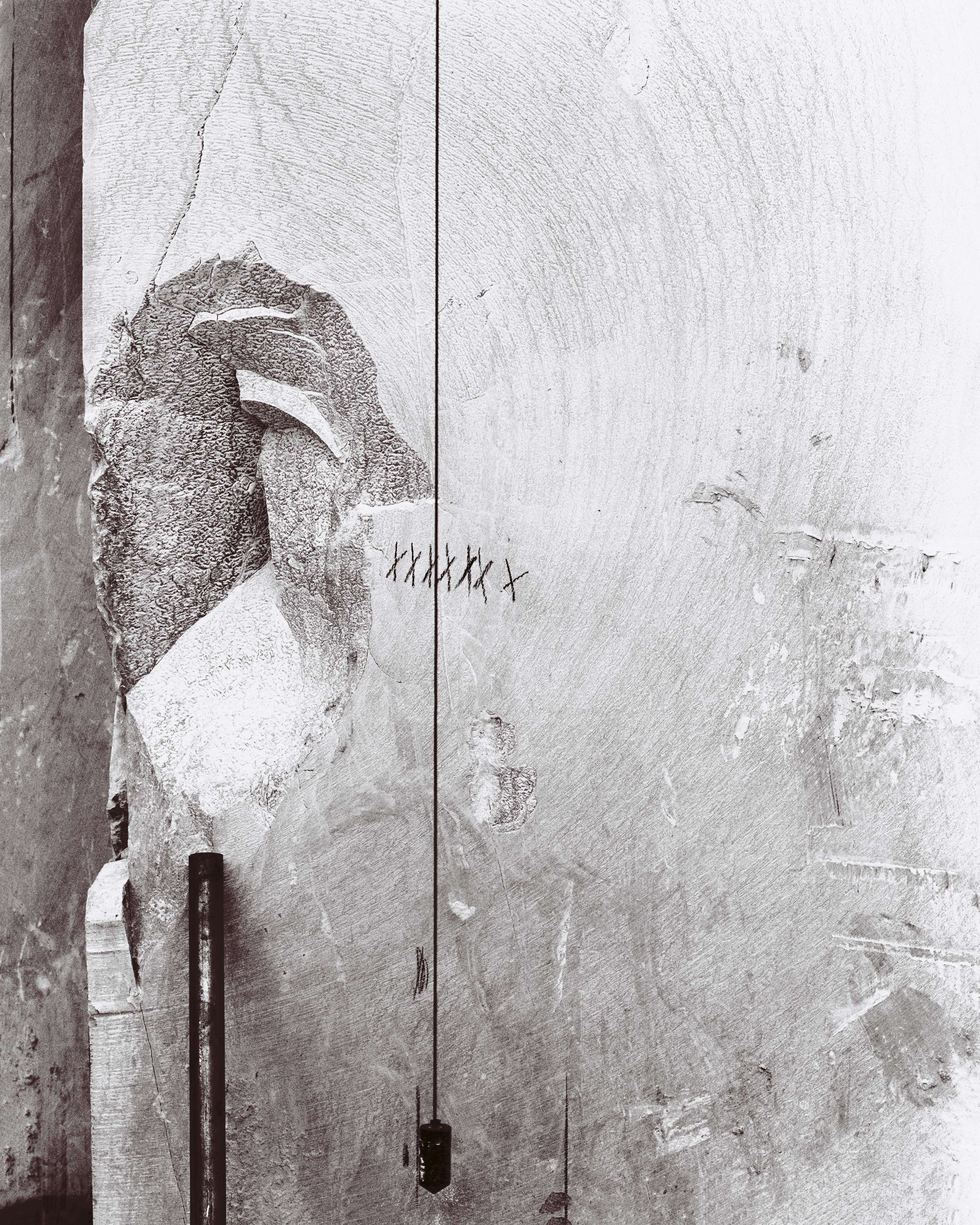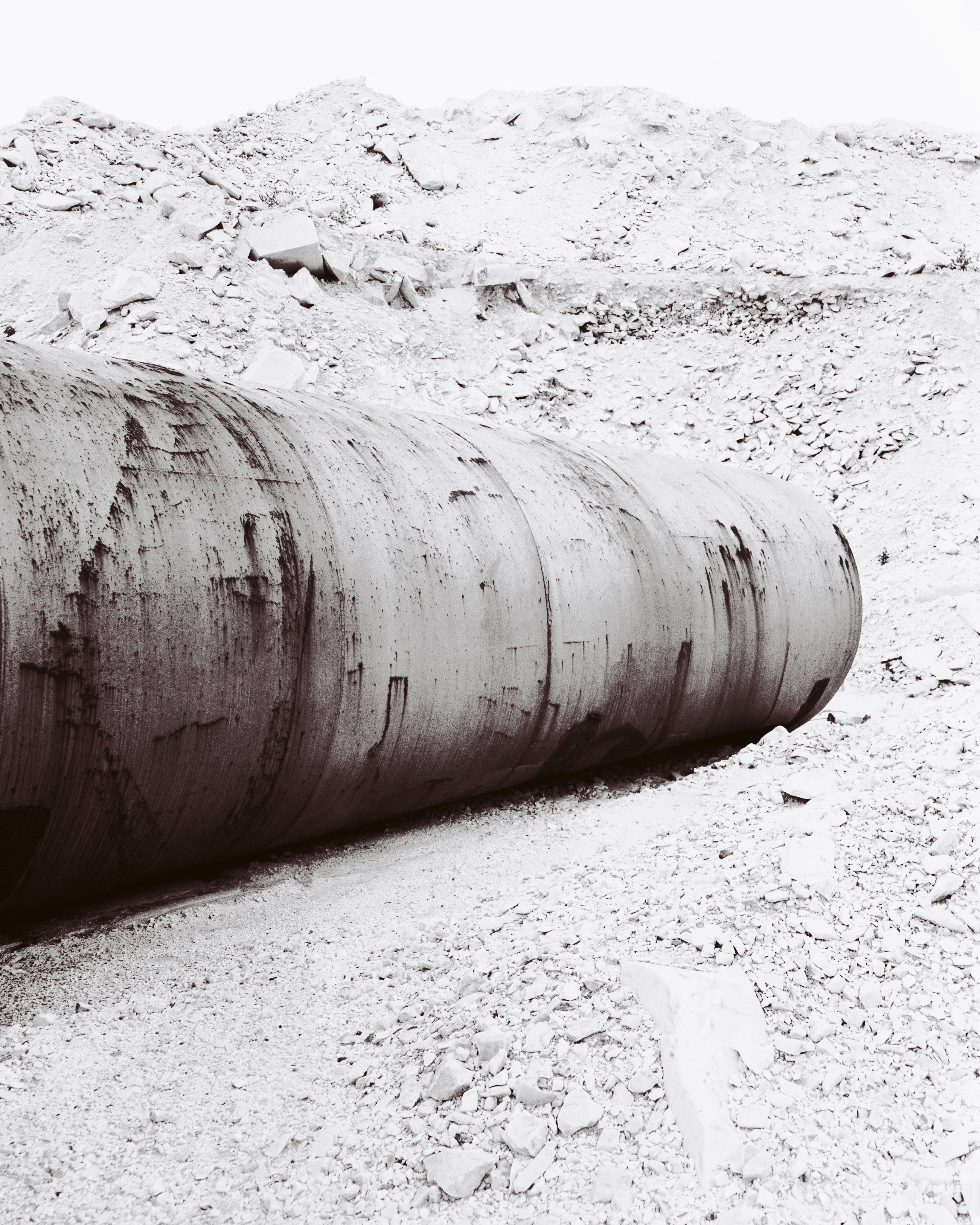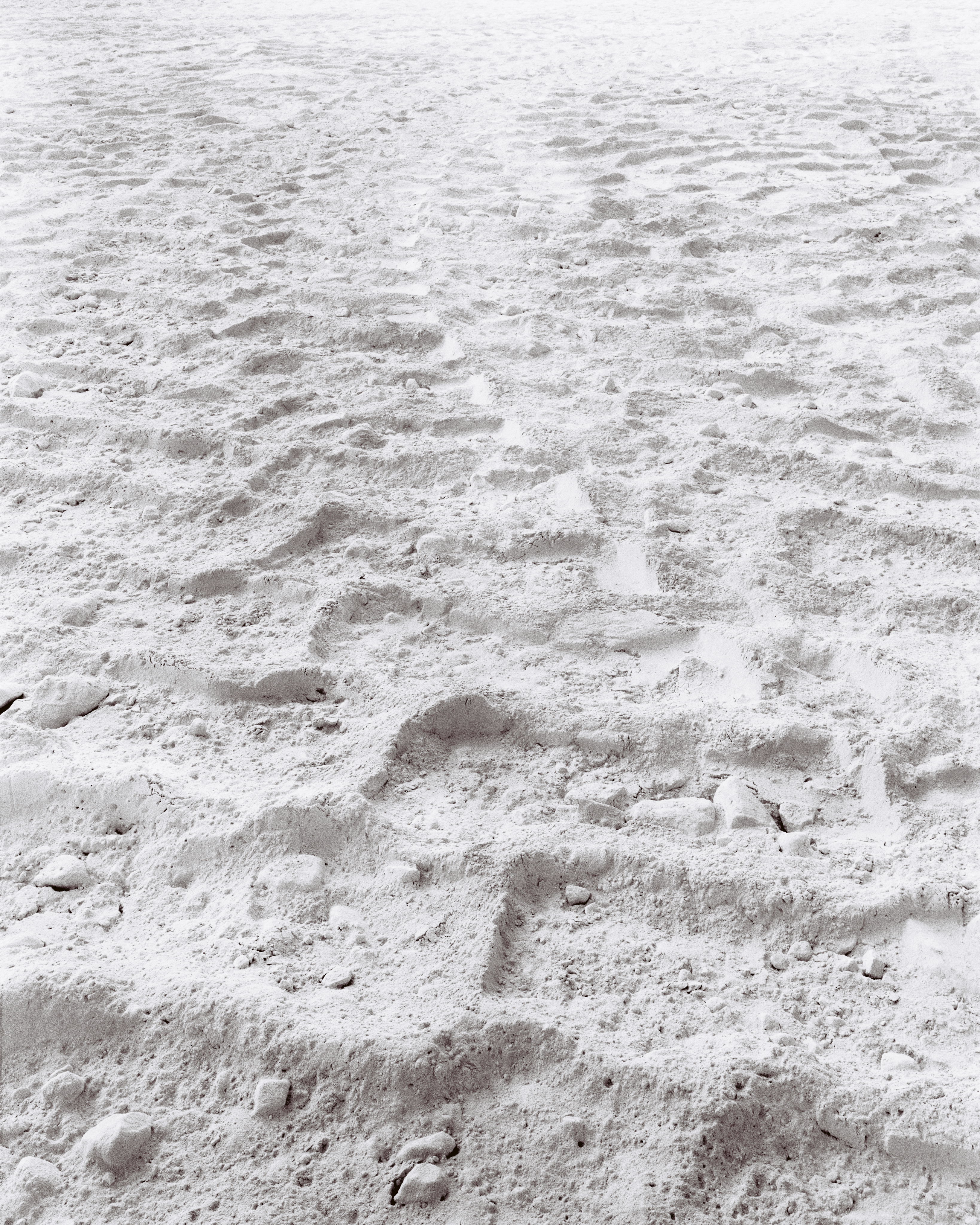1. La Vetta e L’Abisso: Carrara
Conohar Scott
La Vetta e L’Abisso, which translates from the Italian as “Summit & Abyss”, documents the famous white marble quarries of Carrara, Tuscany. The title of the project refers to a line from Goethe’s Faust which remains, according to the scholar Marshall Berman, the pre-eminent drama on the tragedy of industrial development. In the play, Faust proclaims that the transformative potential of industrialisation is accompanied by feelings of alienation:
And what is portioned out to all mankind,/I shall enjoy deep within myself, contain/Within my spirit summit and abyss,/Pile on my breast their agony and bliss,/And let my own self grow into theirs unfettered,/Till as they are, at last I, too, am shattered.
The series begins at the summit of the Apuan Alps, before descending into the marble quarries, and culminating finally in the pulverisation of the rock as fragment and dust. More than one hundred marble quarries operate in the Carrara locality, and it is commonplace for illegal mining to take place in areas designated as National Park land due to the profitability of the stone. Marble of a lesser quality is also pulverised and sold as a textural agent in a variety of beauty products, such as toothpaste and face creams.
At the beginning of the 20th century, the anarchist Alberto Meschi fought against the exploitation of labour by campaigning for an 8-hour working day. Today, over-production in the region is altering the micro-climate as whole mountains quite literally disappear, and for this reason, miners are increasingly drilling into the Apuan Alps in a bid to hollow them out from the inside. In order to draw attention to how Carrara marble is fetishised and commoditized in markets internationally, the photographs in this series are reproduced with the addition of a gold-selenium tone.
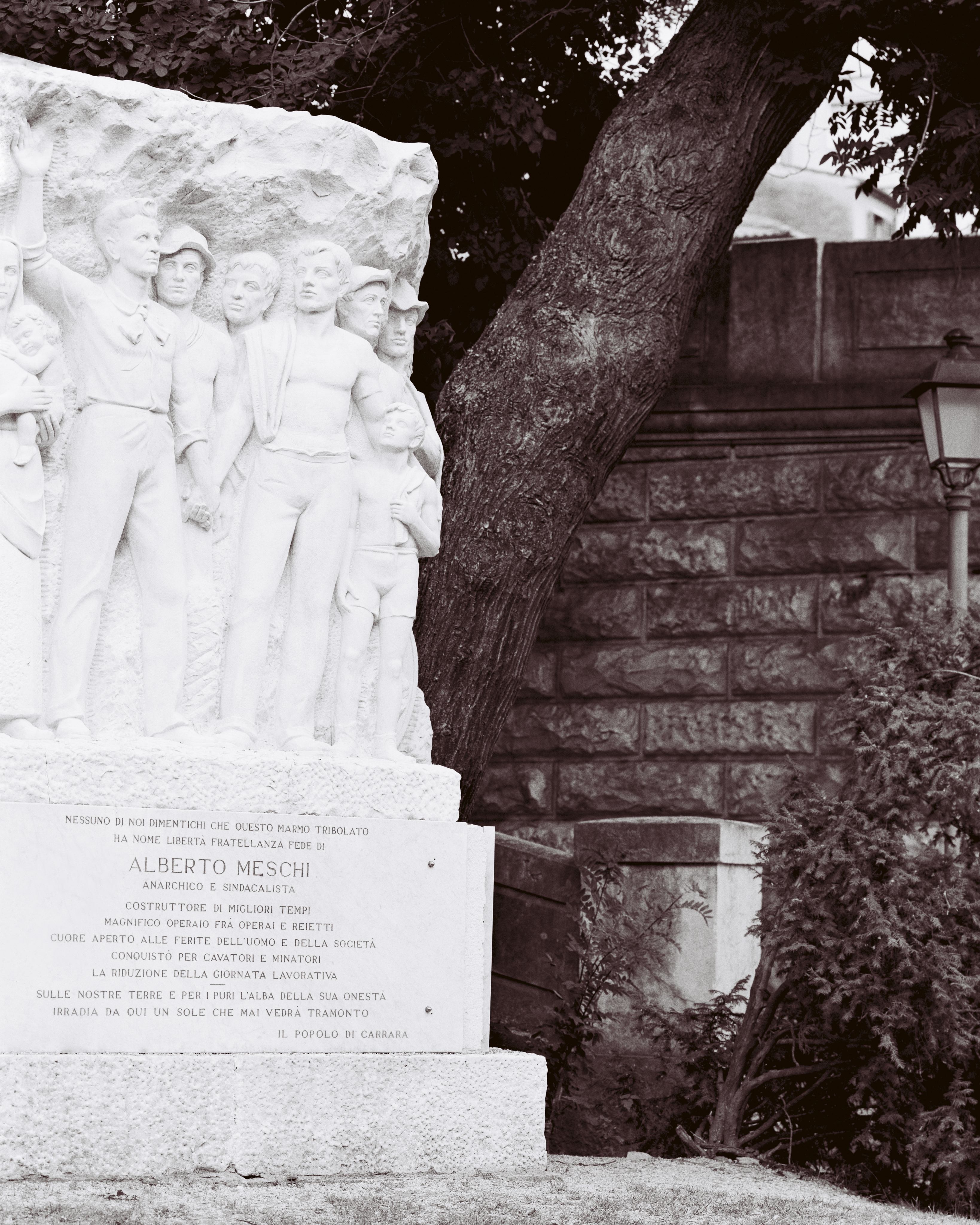
Monument to Alberto Meschi in Piazza Gramsci, realized by sculptor Ezio Nelli, 1965, with an inscription which reads: 'Nobody shall forget that this troubled marble is named after freedom, kinship and faith of Alberto Meschi, anarchist and syndicalist, builder of better times, magnificent worker among the workers and the wretched, open hearth to the wounds of men and of society. He conquered the reduction of the working day. In our lands, and for all pure people, the sunshine of his honesty irradiates from here a sun that will never set. The people of Carrara.’
